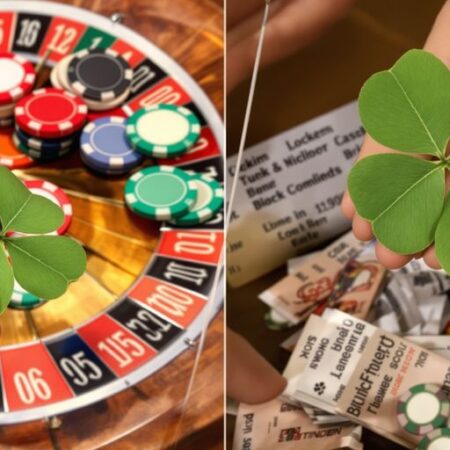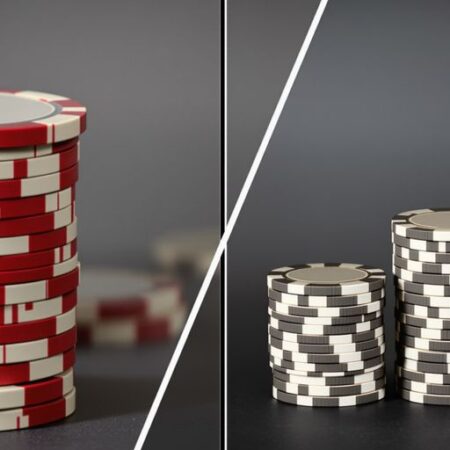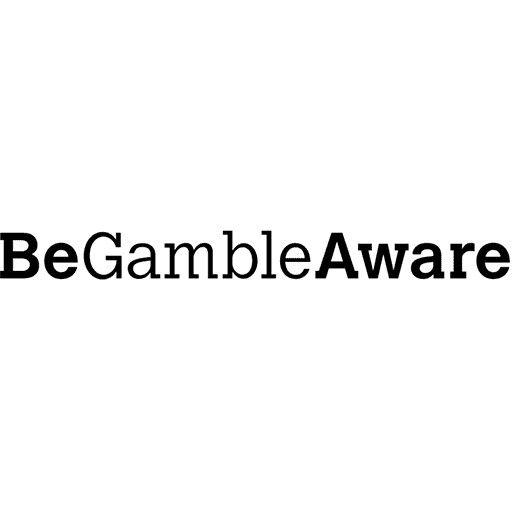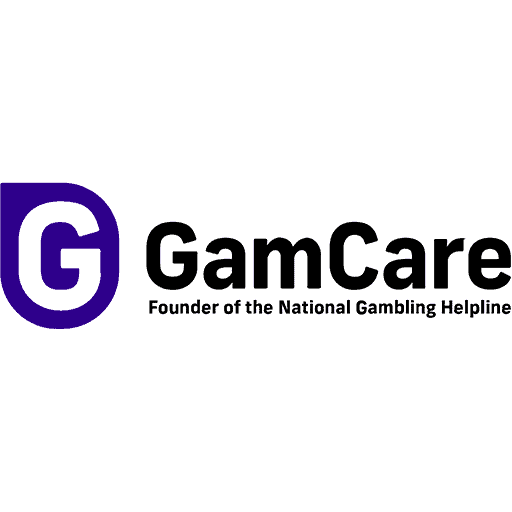Counter-Strike 2 (CS2) is a game that demands skill, strategy, and teamwork. Whether you’re a newcomer or a seasoned player, mastering certain techniques can take your gameplay to the next level.
From improving your aim to enhancing team communication, you’ll find helpful advice to elevate your performance in the game.
The Best CS2 Betting Sites in 2025
Wagering requirement: 30x (bonus + deposit). Minimum deposit: $10. No bonus code is needed.
Any bets placed in Poker or Craps will not qualify
Mastering Your Aim in CS2
Aiming is everything in CS2. You can have the best strategy and the greatest teammates, but you will struggle if you can’t hit your shots. It’s not just about clicking heads; it’s about understanding the mechanics behind the shooting and how to train effectively. Let’s get into it.
Understanding Recoil Patterns
Every weapon in CS2 has a unique recoil pattern. Learning these patterns is key to controlling your spray and landing consistent shots. Don’t just randomly fire; practice controlling the recoil by pulling down and to the side in the opposite direction of the pattern. It takes time, but it’s worth it.
Crosshair Placement Techniques
Crosshair placement is about anticipating where your enemy will be. Keep your crosshair at head level, pre-aiming corners and common hiding spots. This reduces the amount of adjustment you need to make when an enemy appears, giving you a huge advantage. It’s a simple thing, but it makes a big difference.
Utilizing Aim Training Tools
There are tons of aim training tools out there, like Aim Lab or KovaaK’s. These programs let you practice specific aiming skills, like flick shots, tracking, and target switching. Spend some time each day using these tools to warm up and improve your overall aim. It’s like going to the gym for your mouse hand.
Strategic Movement and Positioning
Movement is more than just running around; it’s about controlling space and dictating the game’s flow. We need to think about how we move, where we position ourselves, and how we can use the map to our advantage. It’s not just about getting from point A to point B but about doing it in a way that gives us an edge.
Navigating Corners Effectively
Clearing corners is a skill that separates the good from the great. We can’t just mindlessly run around corners and hope for the best. We need to use techniques like pre-aiming and pie-slicing to minimize our exposure and maximize our chances of winning those close-quarters engagements. It’s about being methodical and anticipating where an enemy might be hiding.
Using Cover to Your Advantage
Cover is our best friend in CS2. We should always consider how we can use walls, boxes, and other objects to protect ourselves while still being able to engage the enemy. These key skills include peeking effectively, knowing when to hold an angle, and understanding how to use cover to bait out shots.
Mastering Map Layouts
Knowing the maps inside and out is non-negotiable. We need to understand the common routes, the chokepoints, and the power positions on each map. This knowledge allows us to anticipate enemy movements, rotate effectively, and make informed decisions about where to be and when. Running around the maps in offline mode getting a feel for the layout, can pay off big time.
Communication and Team Coordination
Effective Callouts
Communication is super important in CS2. We need to be clear and concise when giving callouts. Using standard callouts for each location on the map helps everyone understand what’s happening quickly. It’s no good if half the team calls one spot ‘back site’ and the other half calls it ‘dark.’ Let’s all get on the same page and use the same terminology.
Coordinating Strategies
It’s not enough to know where the enemy is; we must also work together. Before each round, let’s discuss our plan.
Knowing what everyone is doing allows us to support each other and trade kills effectively. If we don’t coordinate, we’re just running around like headless chickens.
Building Team Chemistry
Winning in CS2 isn’t just about individual skill; it’s about how well we play together. We should build a positive and supportive environment. Encouraging each other, even after mistakes, can make a big difference in our overall performance. A team that trusts each other and communicates well is way more likely to win than a team of lone wolves.
Weapon Mastery and Loadouts
Choosing the Right Weapons
Picking the right gun in CS2 isn’t just about what looks cool. It’s about knowing what each weapon brings to the table and how it fits into your role on the team. Are you entry fragging? You’ll want something different than if you’re holding down the back lines. Think about the map too. A tight map might favour SMGs, while a more open one could be rifle territory. It’s all about matching the tool to the job.
Understanding Weapon Stats
Seriously, take a look at the numbers. Damage, rate of fire, armour penetration – these stats tell a story. Don’t just go by feel; understand how these things translate into real-world performance. For example, a weapon with high armour penetration will be more effective against armoured opponents. Knowing this stuff can give us a serious edge in those close-quarters fights. It’s not enough to just point and shoot; we need to know what we’re shooting with.
Optimizing Your Loadout
This is where it all comes together. We must consider our primary weapon, our secondary, and our grenades. How do they all work together? A smoke grenade can be just as important as a good rifle. Also, don’t forget about the buy menu. Set it up so you can quickly grab what you need without fumbling around. A well-optimized loadout means we’re ready for anything, which separates the good players from the great ones.
Utilizing Training Modes and Maps
Getting good at CS2 isn’t just about jumping into matches and hoping for the best. We need to work behind the scenes, which means making the most of the training tools available. CS2 has a built-in Training Mode, which is super helpful. Plus, there are tons of community-made maps designed to help us sharpen specific skills. Let’s get into it.
Practicing Spray Control
Seriously, mastering spray control is a game-changer. It’s the difference between landing a few lucky shots and consistently taking down enemies. We should find workshop maps showing each weapon’s spray patterns. Spend some time practicing short bursts and full sprays until it becomes muscle memory. Consistency is key here, so don’t skip this step.
Movement Drills
Movement is more important than some people think. Strafing, bunny hopping, and crouch jumping can give a considerable fighting edge. Maps specifically designed as obstacle courses help us practice these techniques.
Try to find ones with moving targets so we can work on our aim simultaneously. It’s all about becoming a harder target to hit while still being able to land our shots.
Grenade Throw Techniques
Grenades can completely swing a round in our favour, but only if we know how to use them properly. Players must learn common smoke lineups to block enemy vision and flashbang throws to disorient them.
There are tons of community-made maps dedicated to grenade practice. Spend time learning these throws, and you’ll be surprised at how much it improves our game.
Enhancing Your Audio Settings
Sound is super important in CS2. It can be the difference between winning and losing a round. We need to make sure our audio settings are dialled in so we can hear everything clearly. It’s not just about turning up the volume; it’s about ensuring the essential sounds cut through the chaos.
Boosting Important Sound Cues
Footsteps are your early warning system. We need to make sure we can hear them clearly, even when there’s gunfire and explosions going off. Adjusting the EQ settings can help bring out those subtle sounds. Also, pay attention to the bomb timer, especially in those last few seconds. A slight boost can save you from an unexpected explosion.
Adjusting Audio for Clarity
Clarity is key. We don’t want a muddy mess of sounds. Messing with the audio channels can help separate different sound sources. For example, we can slightly reduce the volume of non-essential sounds, like ambient noise, to make footsteps and gunshots more distinct. It’s all about finding that sweet spot where everything is clear and easy to identify.
Using Headphones for Competitive Edge
Headphones are a must for competitive play. The built-in speakers just don’t cut it. A good pair of headphones will give us a much better sense of spatial audio, allowing us to pinpoint the location of enemies based on sound alone. It’s an investment that will pay off in the long run.
Visual Optimization for Competitive Play
Let’s discuss making CS2 look its best so you can play your best. It’s not just about making the game pretty; it’s about giving yourself a competitive edge. We’re going over some settings that can help you spot enemies and react faster.
Adjusting Color Settings
CS2 can sometimes look washed out. A simple fix is tweaking your colour settings. Messing with the gamma and digital vibrance can make a huge difference. Experiment until you find a balance where enemies pop, and the environment is clear. It’s all about finding what works for your eyes and your monitor.
Improving Visibility
Visibility is key. You don’t want to be squinting to see someone hiding in a dark corner. Adjusting your brightness and contrast can help a lot. Also, pay attention to your shadow settings. Sometimes, lower shadow settings make it easier to spot enemies, believe it or not.
Utilizing High-Contrast Modes
Some monitors have built-in high-contrast modes, which can be a game-changer. These modes make it easier to distinguish between different elements on the screen. If your monitor has one, give it a shot. You might be surprised at how much it helps. If not, there are software solutions that can achieve a similar effect. It’s all about ensuring you can see everything clearly and react quickly. Many players don’t even bother with this, but it’s a huge advantage if you take the time to set it up.
Understanding Game Mechanics
Health and Armour Management
In CS2, understanding how health and armour work is super important. Knowing when to buy armour and what kind can change how a round plays out. Armour absorbs damage, so you don’t lose health as fast. We need to think about what weapons the other team is using and how much money we have to make smart choices about armour. Sometimes, saving money for a better weapon is better than buying armour, and sometimes the opposite is true. It’s a balancing act.
Economy Management
Managing our economy is a big part of being successful in CS2. If we spend all our money every round, we might end up in a situation where we can’t afford good weapons when needed. We need to pay attention to how much money we get for winning and losing rounds and how much different weapons and equipment cost. Sometimes, it’s better to save money for a round or two so we can buy better gear later. It’s all about planning ahead and working with our team.
Round Strategy Planning
Before each round, we should have a plan. Are we going to rush a particular spot? Will we play defensively and wait for the other team to come to us? Having a basic strategy helps us work together and makes us less predictable. We need to think about what the other team has been doing, their weapons, and the map. Sometimes, we need to change our plan in the middle of a round, but having a starting point is always a good idea.
Adapting to Different Game Modes
CS2 isn’t just about one way to play. We need to shift our thinking depending on what mode we’re in. What works in a casual match might be a terrible idea in a competitive setting. It’s all about understanding the nuances and adjusting our approach.
Casual vs. Competitive Play
In casual mode, we can mess around, try new things, and not worry too much about the outcome. Competitive mode is where things get serious. We need to be more strategic, communicate better, and really focus on winning. The pressure is higher, and so is the level of play. We can’t just run and gun like we might in casual mode; we need to think about economy, positioning, and teamwork.
Understanding Objective-Based Modes
Beyond the classic bomb defusal, CS2 has other objective-based modes. Each one demands a different approach. In hostage rescue, for example, our priorities shift to safely extracting the hostages, which changes how we move and engage. Knowing the specific objectives and how they affect the gameplay is key to success.
Adjusting Strategies for Different Maps
What works on Dust II might not work on Inferno. Each map has its layout, chokepoints, and strategic locations. Learn these maps inside and out and adapt our strategies accordingly.
With its tight corridors and verticality, a map like Nuke requires a very different approach than a more open map like Mirage.
Consider grenade spots, common camping locations, and the best routes for attacking or defending.
Analyzing Your Gameplay
It’s easy to get caught up in the heat of the moment, but taking a step back to analyze our gameplay is essential for improvement. We can’t fix what we don’t see, and often, our mistakes are glaringly obvious once we review them with a clear head. Analyzing our gameplay allows us to identify patterns, understand our weaknesses, and refine our strategies for future matches.
Reviewing Match Replays
Watching match replays is one of the most effective ways to analyze our gameplay. CS2 conveniently records our matches, allowing us to see things from a different perspective.
Observe your positioning, decision-making, and aim in various situations. Did you miss an easy shot, or were you out of position? Replays help players answer these questions.
Identifying Weaknesses
It’s possible to pinpoint specific areas where we need to improve through replay analysis. Our aim may be shaky under pressure, or we may struggle on a particular map. Identifying these weaknesses is the first step towards addressing them. It’s not about dwelling on mistakes but understanding them so we can actively work on them. For example, if we notice we’re always getting caught off guard in a specific spot, we can adjust our positioning or practice clearing that area more effectively.
Setting Improvement Goals
Once we’ve identified our weaknesses, it’s time to set realistic improvement goals. Instead of vaguely aiming to “get better,” we should focus on specific, measurable, achievable, relevant, and time-bound (SMART) goals. For instance, we might aim to improve our headshot percentage with the AK-47 by 5% within the next two weeks.
Community Engagement and Learning
It’s easy to think that individual skill alone will carry you in CS2, but that’s not true. We need to remember that the game is constantly evolving, and the best way to keep up is by engaging with the community and continuing to learn. There are tons of resources, and tapping into them can improve your game. Don’t underestimate the power of shared knowledge and experience.
Participating in Forums
Forums are a great place to ask questions, share tips, and discuss strategies. You can find answers to pretty much any question you have and learn about new tactics and approaches that you might not have thought of on your own. Plus, it’s a good way to connect with other players and find people to team up with. Take everything with a grain of salt and do your own testing before accepting something as gospel.
Following CS2 Content Creators
Many content creators make videos, stream games, and share their insights. Watching these guys can be an effective way to learn. You can see how they play, their strategies, and their reactions to different situations. Look for creators who are good at explaining their thought processes and focus on educational content rather than just entertainment.
Learning from Experienced Players
One of the best ways to improve is to learn from people who are already good at the game. If you know someone who’s a better player than you, ask them for tips and advice. Watch their demos, ask them questions about their decision-making, and try incorporating their strategies into your game. You might be surprised at how much you can learn just by observing and talking to more experienced players.
Wrapping It Up
So there you have it! If you want to shine in CS2, keep these tips in mind. Focus on your role, keep your aim sharp, and always communicate with your team. Remember, it’s not just about getting the most kills; it’s about playing smart and working together. Practice regularly, stay updated on game changes, and don’t hesitate to tweak your strategies as you learn. The more you play, the better you’ll get. So jump in, have fun, and show those opponents what you’ve got!
Frequently Asked Questions
How can I improve my aim in CS2?
To improve your aim in CS2, practice regularly with aim trainers like Aim Lab or KovaaK’s. Always keep your crosshair at head height, and play often to build muscle memory.
What are some tips for better accuracy in CS2?
To be more accurate in CS2, focus on understanding weapon recoil patterns and practice your aim. Make sure to position your crosshair where enemies are likely to appear.
How do I communicate effectively with my team?
Use clear callouts for enemy locations and share your plans to communicate well. Good teamwork can help you win matches.
What weapons should I choose for different situations?
Choose weapons based on your play style and the map. Shotguns or SMGs work well for close-range combat, while rifles are better for long-range combat.
How can I manage my in-game economy?
Keep track of your money each round. Spend wisely on weapons and equipment, and coordinate with your team to make sure everyone has what they need.
What are some good training modes in CS2?
Use the built-in Training Mode for practice. You can work on your aim, movement, and grenade throws without the pressure of a real match.
How can audio settings affect my gameplay?
Adjust your audio settings to hear important sounds better, like footsteps or bomb timers. Using good headphones can give you an edge.
What should I do to analyze my gameplay?
After matches, review your gameplay to see where you can improve. Identify mistakes and set goals for what you want to work on next.













